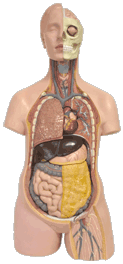At WiseGEEK, we're committed to delivering accurate, trustworthy information. Our expert-authored content is rigorously fact-checked and sourced from credible authorities. Discover how we uphold the highest standards in providing you with reliable knowledge.
What is the Epineurium?
The epineurium is the layers of connective tissue that make up the outer layer of the peripheral nerves contained in the human body. Peripheral nerves consist of fibers that are responsible for carrying information to and from the spinal cord. The epineurium is the outer layer of these nerve bundles. This layer is made of tough connective tissue that serves as protection for the delicate nerve fibers. The inner portion of the epineurium encloses the individual bundles of nerve fibers, also known as fascicles.
The blood vessels that supply the nerves are also included as part of the epineurium. Epineurial cells, also referred to as epineural cells, make up the layers of this connective tissue. Therefore, this term can be applied to the cells themselves as well as the individual layers of tissue.

The inner epineurium is surrounded by another layer of connective tissue. This layer is known as the outer epineurium. These layers work together to provide support and protection for the nerve bundles, or fascicles. Adipose cells, also known as fat cells, and blood vessels are among the supportive structures found within the epineurium. Different types of nerves influence differences in the composition of the epineurial cells.
If the epineurium becomes damaged, whether by natural disease or a traumatic event, nerve damage becomes a concern. Without the protection of this protective covering, the nerve fibers themselves are easily susceptible to injury. Depending on the actual nerves that become damaged, a variety of medical issues may arise.
If the nerves known as autonomic nerves become damaged, involuntary functions of the body, along with some partially voluntary functions, may become compromised. Blood pressure and heart rate are among the bodily functions affected by this type of nerve damage. The body's ability to regulate temperature is also controlled by the autonomic nerves, as are parts of the digestive process.
Motor nerves control movement. Therefore, if these nerves become damaged, normal movement, particularly muscle movement, may be affected. The sensory nerves are responsible for physical sensations such as pain. When this type of nerve is damaged, chronic pain sometimes becomes an issue.
The treatment for nerve damage relating to epineurium injury varies according to the specific injury as well as the bodily functions affected by this damage. Medications and physical therapy are often prescribed. In severe instances, or when more conservative methods of treatment are not successful, surgery may become necessary in order to repair the nerves.
AS FEATURED ON:
AS FEATURED ON:










Discussion Comments
@Bertie68 - As far as I know the epineurium can't be regenerated, but may be repaired by surgery. Like the article said, there are the three kinds of nerves.
So for the nerves that regulate functions like heart, blood pressure and digestion, not much can be done. Your heart system is at least somewhat affected.
If you have motor nerve epineurium damage, physical therapy can help muscle strength and movement.
Sometimes the nerve coverings of the sense nerves can cause pain. Medication is often used for this.
It seems like nature has set up a great system of protection for our nerves, with the tough fibers of the epineurium covering the nerves.
With all that protection, it seems like it would take a pretty serious injury to harm them. But if the covering around them is damaged, it exposes the nerve to injury.
I wonder if the injured epineurium can regenerate itself at all?
Post your comments